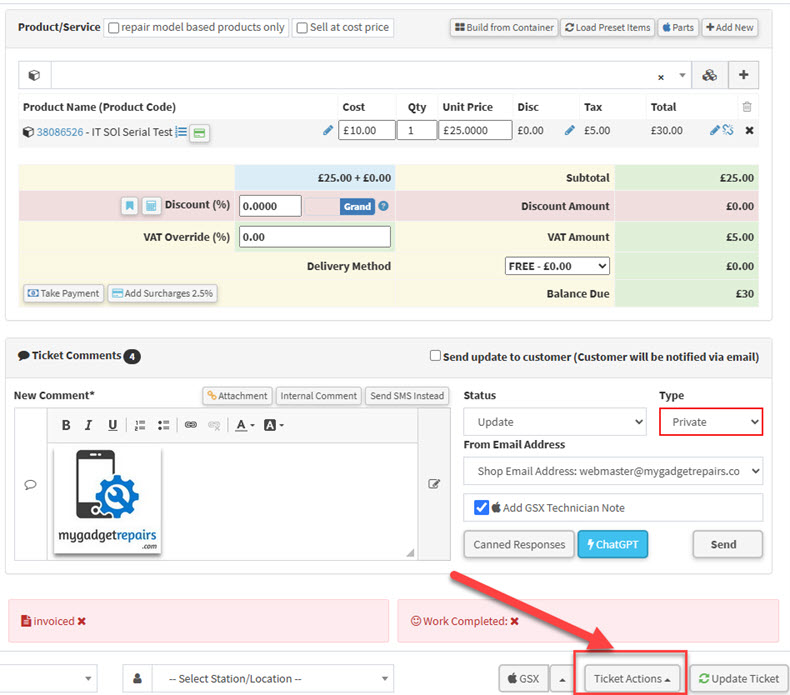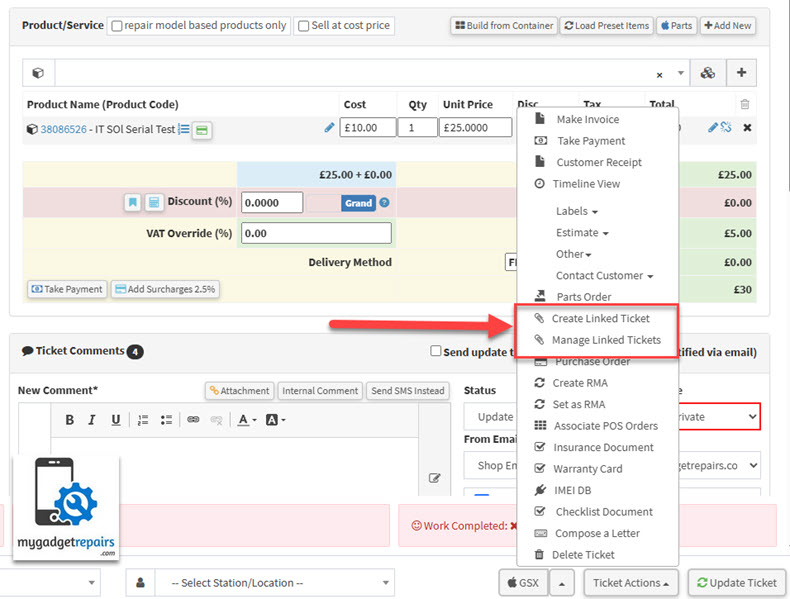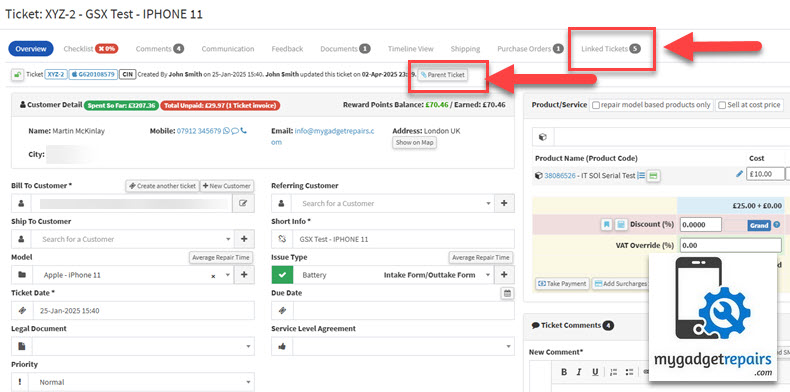Overview
The Linked Tickets feature in MGR allows you to create a parent-child relationship between repair tickets, enabling you to split a single job into multiple tickets that can be assigned to different technicians. This powerful tool is ideal for managing complex repairs, collaboration between technicians, and maintaining full traceability for every component of a repair job.
What Are Linked Tickets?
Linked tickets are sub-tickets created from a main (parent) ticket. They allow you to divide work among multiple technicians while keeping everything tied to the original job. Each linked ticket can have its own assigned technician, notes, parts, and labour logs, but they are all associated with the parent ticket for tracking and reporting purposes.
Key Features
-
Parent-Child Structure: One main ticket with one or more linked (child) tickets.
-
Independent Task Assignment: Assign each sub-task to different technicians.
-
Parts and Costs Management:
-
Add parts and costs to the parent ticket for consolidated invoicing.
-
Or track them individually on each linked ticket.
-
Please note: Parts associated with linked tickets will not be automatically included in the parent ticket. If required, these parts must be manually added to the parent ticket and not in the linked ticket. This is because each ticket maintains its own invoicing and billing records independently. Keeping parts and charges separate ensures accurate accounting, transparency, and flexibility in managing customer jobs.
-
-
Complete Visibility: See all linked tickets from the parent ticket dashboard.
-
Audit Trail: Know exactly who worked on each part of the job, helpful for accountability and RMA processes.
-
Time Tracking: Log time per technician accurately by splitting work across tickets.
-
Comments and Communication: Collaborate easily with technician-specific notes and updates.
When to Use Linked Tickets
-
Multiple Technicians on a Single Job: For example, if one technician handles diagnostics and another handles the actual repair.
-
Different Areas of Expertise Required: Split tickets based on technician skillsets (e.g., board repair vs screen replacement).
-
Large-Scale Repairs or Multi-Part Jobs: Complex repairs with multiple components or steps.
-
Field Service or Multi-Location Work: When parts of the repair need to be completed at different locations or times.
How to Create a Linked Ticket
-
Open the parent ticket you wish to split.
-
Click on “Create Linked Ticket” or “Manage Linked Tickets” from “Ticket Actions“.
-
Choose:
-
Add ticket “Short Info“
-
Assigned Technician
-
Optional: Add parts, notes, and due date/time
-
-
Save. The ticket now appears as a linked sub-ticket under the parent ticket.
Repeat this process for as many sub-tasks or technicians as needed.

Click on “Ticket Actions“.

Once a “Linked Ticket” is created, a new tab labelled “Linked Tickets” will appear in both the parent and child tickets. This tab provides a centralised view of all related tickets, making it easier to track dependencies, manage progress, and maintain clear communication across connected tasks.

You can easily enable or disable notifications for linked tickets by navigating to Settings > Notifications. This allows you to control whether updates, comments, or status changes on linked tickets trigger notifications, helping you stay informed only when it matters.

Tips and Best Practices
-
Always define clear task descriptions in linked tickets to avoid overlap or confusion.
-
Use linked tickets for training purposes, junior techs can work on sub-tasks under supervision.
-
Make it a habit to review linked tickets during job completion and invoicing to ensure nothing is missed.
-
Utilise filters and reports in MGR to analyse job performance across parent and child tickets.
Conclusion
The Linked Tickets feature in MGR is essential for any repair shop handling complex jobs, multi-tech collaboration, or detailed job accountability. It not only makes your workflow more organised but also improves service quality, efficiency, and tracking.


